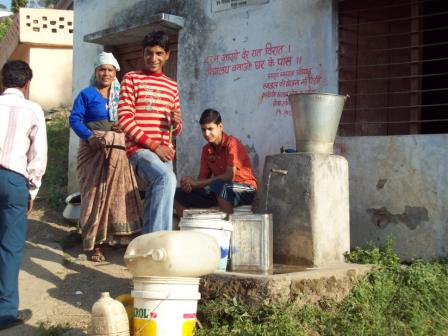
Project Summary
The Himalayan region receives high rainfall. However, most of it is concentrated in the monsoon season leaving local communities struggling for access to potable water during other times of the year. This meant that the women, who were primarily responsible for fetching water, travelled long distances braving the odds of high gradient due to the mountainous terrain for fetching water for household purposes and livestock. Arghyam supported Himalaya Seva Sangh (HSS) to institutionalise community based water supply systems to ensure perennial water availability. This was done by tapping the existing water harvesting structure. The project’s key components were:
- Ensured adequate water supply system around the year on sustainable basis.
- Ensured safe drinking water to the people of that area.
- Built the capability of the community to manage their drinking water system
- Awareness was imparted on hygiene practices leading to better health and hygiene among the households.
- Ground water recharge, spring rejuvenation and soil erosion control.
- Created a network of partners who were facilitated to work in their respective regions to ensure water security and improving hygiene practices.
The project ensured improved access of water for women, who did not have to travel long distances in a hilly terrain to access water for day to day use.
Outputs
- Several mobile workshops, padyatras and work camps were undertaken on larger water issues such as river protection. This brought solidarity among the workers, sensitisation of community and brought the issue into limelight.
- Three citizen reports on water issues published and one state level workshop at Delhi organised towards Govt. advocacy and to voice various campaign leader’s work.
- A successful IEC component ensured that the people came forward to contribute over Rs. 70,000 towards the project activities.
- Construction of cost effective, traditional water harvesting structures -around 145 chaals helped recharge springs downstream.
- Microbe -free, safe water in four villages through around four, community-level slow sand filters, installed near the springs and connected to the existing piped water supply scheme.







 Himalaya Seva Sangh (HSS)
Himalaya Seva Sangh (HSS)